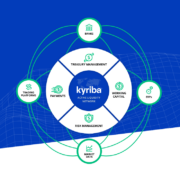Enhanced Global Liquidity through Notional Pooling and Payment Netting
| 21-12-2020 | Vincenzo Masile | treasuryXL |
Liquidity management is one of the core roles of treasury and maintaining the right level of liquidity to guard against risks is of key importance. Liquidity needs are affected by many factors both internal and external, some of which lie outside the treasurer control and some of which are extremely subjective and difficult to forecast. Liquidity, after all, is not an exact science
The level of liquidity held varies hugely, even between companies in similar industries and similar market positions, while due to complex account structures a “safety net” of cash holdings may be inaccessible when most needed. Effective liquidity management requires an account structure that facilitates fast decisions and simplifies transfers between the company accounts.
A global cash pool is a balance netting cash concentration solution providing with access to group liquidity through a real-time, cross-border, multi-currency cash pooling structure. The cash pool is topped by an off-balance multi-currency master account, holding the cash pool net balance in the currency of the treasurer choice. One on-balance top account per currency holds the pooled net balance in the respective currency. A global cash pool replaces multiple local cash pools and offers significant advantages to the group liquidity management.
What is Netting?
A process which reduces transfers of funds between subsidiaries or separate companies to one net amount.
What are the benefits of Netting?
- Consolidates and off-sets payables against receivables between multiple group companies on a global and multicurrency basis
- Reduces the number of inter-company funds transfers
- Minimizes costs of associated foreign exchange
- Avoids the need for group companies to make multiple transfers and execute opposite foreign exchange transactions
The Netting Cycle
Customer: Netting provider:
day X-4 Company “A” participants Invoices to be paid > processing & checking
day X-2 Company “A” participants < Preliminary/Final Results calculations
day X Company “A” participants < Payments from participants settlements
Payments to participants >
Why Implement Netting?
- Less administrative workload
– Netting center can be viewed as corporate treasury back-office
- Continuity of operational tasks
– Funds will be paid/collected with proper/same value date
– Settlement over existing local bank accounts; no accounts at netting bank are required
- Increased visibility and control
– All netting input and output stored in one database
- Centralization of FX
– Consolidates FX positions
– Improves FX spread
– Ability to include FX hedge transactions - Flexibility
– Settlement can be in any currency required by affiliate
– Additional run on an ad-hoc basis; quarter end, year end
Global Multi-Currency Notional Cash Pool
Notional Cash Pooling
- Group companies open bank accounts in their own name in local currency at the pooling center
- No inter-company loans are created
- Group companies with credit balances at BMG are deemed bank deposits and group companies with debit balances at BMG are deemed bank overdrafts
- All account balances – both credit and debit – are treated on a net basis
- Interest is bank interest
- Interest rates applied are based on the net position per currency in the cash pool (not traditional bank BID/ASK spreads)
- Treasury can choose interest margins to create revenues for Finance company/Treasury
Zero Balance Cash Pooling
- The Finance company (or other group company) opens accounts in their name at pooling center
- Group companies can put cash on deposit with the finance company or borrow from the finance company
- Inter-company loans are created
- Inter-company loans need to be administered
- Interest is inter-company interest
True Multi-Currency Multi-Entity Notional Pool
- Enables multiple group companies in numerous geographical regions to retain local accounts at local banks; “overlay”
- Consolidation is achieved by transferring local balances (both debit and credit) to accounts held by the individual group companies at the pooling center. There is no change of ownership of funds, and no question of intercompany loans
- Offset is accomplished without physical concentration/conversion (FX)
Also:
- One interest rate per currency (no spread between overdrafts and deposits)
- Permits not only concentration of excess cash, but allows overdrafts within the pool
- Full offset capabilities (risk and accounting) for both client and bank
- Operational in multiple time-zones
Notional Cash Pool & Key Tax Points
Bank Pledge versus Cross Guarantee
- Notional Cash Pool is based on Pledging of Balances to the bank. Normally cash pools are based on Cross Guarantees which is an unlimited joint resulting in liabilities between related group companies
Interest
- Interest is classified as bank interest (credit and debit). All Cash Pool balances are cash on deposit or a current account overdraft
Transfer pricing
- The bank executes the daily investments and borrowings of the group companies and applies arm’s length interest rates. Tax can insert interest margins as needed
Interest withholding tax
- BMG is domiciled in the Netherlands resulting in no WHT on credit interest paid. In some cases WHT is applicable on interest charged
Thin cap rules
- The Cash Pool borrowings are deemed loans/overdrafts from the bank. Thin cap rules are sometimes more flexible regarding bank overdrafts
Conclusion
Companies who implement netting or cash pooling significantly boost the efficiency of their cash and FX management. Companies who implement both, effectively create an in-house bank. The final stage in the process of designing a new cash mobilization structure (or reviewing an existing one) is to assess all possible solutions against the group’s original objectives. Treasurers should bear in mind this to ensure an appropriate and cost-effective solution is chosen.

Treasury Expert/Credit Risk Manager










